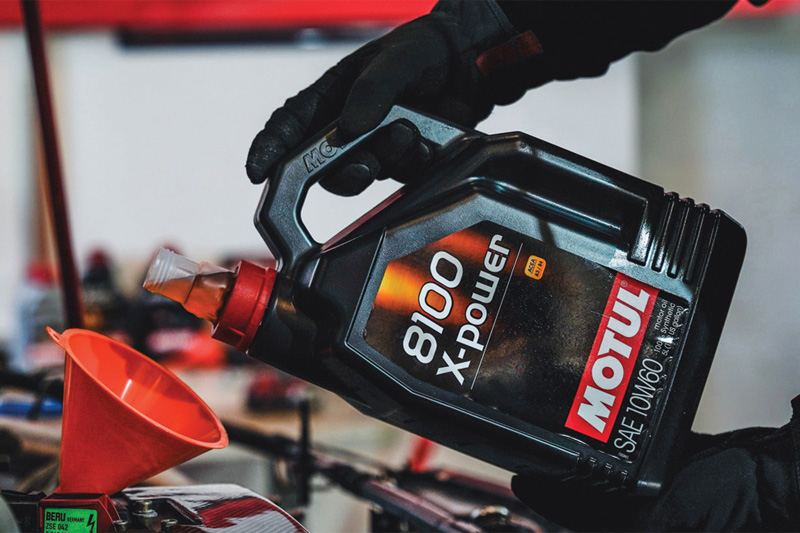
In this limited series of articles, Witham Motorsport, exclusive distributor of Motul products, tracks the journey of the humble lubricant. Each issue of PMM will focus on a different stage. This month we look at how technicians should best handle lubricants in the workshop.
● What are some tell-tale signs the oil hasn’t been changed in a while?
If the oil hasn’t been changed according to the OEM requirements and adapted to the operating conditions, the lubricant will be contaminated with solid impurities i.e. soot, dust, metal wear, which will cause sludge, heavy wear and tear on all engine components such as main bearings and turbo charger bearings. This will dramatically reduce the overall engine lifetime duration.
● What are some good tips when it comes to using lubricants?
- Use lubricants which comply with OEM service-fill approvals, specifications, homologations or standards only. The information regarding the oil quality which is needed for a vehicle is in the owner manual or service documentation or on the Motul Lube Advisor
- For seasonally used vehicles, an oil change before winterising is recommended
- Selling top-up oil actively will bring additional turnover for the workshop. You can place the top-up oil can in the trunk with the offer to the customer that if it hasn’t been used by the next oil service it will be used then
● What are some things to bear in mind when assessing an oil change?
- Oil drain intervals should be adapted to operating conditions and hardware modifications
- If the oil level is too high, check if this is due to leaking or damaged injectors or too many incomplete DPF regenerations
- Ask the vehicle owner regarding the type of personal use and evaluate if it runs under normal or heavy operating conditions
- Check if there is no income coolant into the lubrication circuit
- In case of an expected engine damage a used oil sample can be analysed in a laboratory and show the type and quantity of wear and tear and give the answer for the initial reason for the damage
● What’s the best way to ensure a clean and easy lubricant change?
- Ensure your workshop has the right equipment and tools for an oil change. Waste oil has to be collected and disposed according to the local regulations
- Check upfront which oil quality and quantity is needed and have the right engine oil and oil filter cartridge ordered from your wholesaler or supplier
- Warm-up the engine before oil change. With increased oil temperature the viscosity is reduced. This has impact on time needed for the oil change procedure and how much used oil quantity will be drained
- If the engine runs under heavy operating conditions, it will cause additional deposits in the lubrication circuit. The use of a cleaning additive like Motul Engine Clean before an oil change allows you to remove dirt with the oil change from the entire lubrication circuit
- Use the right oil quantity. If there is too much engine oil in the lubrication circuit it will damage seals and the exhaust gas after treatment system e.g. lambda probe, catalytic converter and particulate filter.
For more information, click here.









